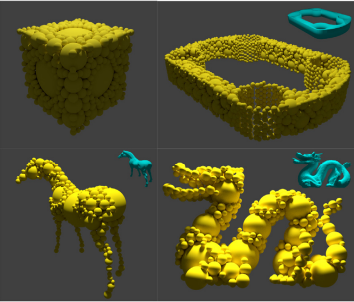

This video contains proprietary information and cannot be shared publicly at this time.
Figure 1

Team 79
Team Members |
Faculty Advisor |
Kyle Vu |
Professor Horea Ilies Sponsor Other |
sponsored by

Maximal Disjoint Ball Decomposition for Shape Modeling and Analysis
There are hundreds of thousands of manufacturers in the US, but there currently is not a good method for connecting the most compatible companies and manufacturers together. In the large scope, the Maximal Disjoint Ball Decomposition (MDBD) project seeks to solve this issue. MDBD allows 3D models to be compared on a quantitative level, by comparing the locations of the spheres used to fill the original CAD models. Having such a quantitative comparison available, a database of decompositions could be created so that companies could upload their models and be connected with manufacturers who have made similar products. However, the efficiency of computing these ball decompositions for CAD models is critical. The scope of this senior design project is to find a more efficient method for computing the ball decompositions for CAD models. There are a few possible solutions to this issue such as using octrees or marching cubes, but each of these solutions has its fair share of challenges. The goal is to use these methods to reduce the number of computations needed to construct the ball decomposition and thus increase the efficiency of the algorithms.
